POINTSMAN FOUNDATION
BOARD OF DIRECTORS

DR. MARK G. RAIZEN
FOUNDER/CHAIRMAN
Mark G. Raizen received his undergraduate degree in mathematics with honors from Tel-Aviv University in 1980. He continued his graduate education at The University of Texas at Austin, under the guidance of Steven Weinberg (Nobel Prize in Physics, 1979) and Jeff Kimble (California Institute of Technology). Raizen completed his Ph.D. in 1989. He then was awarded a National Research Council Postdoctoral Fellowship at the National Institute of Standards and Technology in Boulder where he worked with Dr. David Wineland (Nobel Prize in Physics, 2012). Dr. Raizen returned to The University of Texas at Austin as an Assistant Professor of Physics in 1991. Dr. Raizen is now a tenured Full Professor of Physics at The University of Texas at Austin, and holds the Sid W. Richardson Foundation Regents Chair in Physics. He also holds joint appointments as Professor of Pediatric Medicine and Professor of Diagnostic Medicine at the UT Dell Medical School. He is the recipient of the I. I. Rabi Prize (1999), the Max Planck Prize (2002), and the Lamb Medal (2008), and a research award from the W.M. Keck Foundation (2015). Dr. Raizen is a Fellow of the American Physical Society, the Optical Society of America, and the American Association for the Advancement in Science. Dr. Raizen directs an experimental research program, and in recent years developed general methods for cooling almost any atom in the periodic table near the absolute zero of temperature. Beyond basic physics, these same methods will transform the way that isotopes are separated, providing crucial isotopes for humanity. For more information, see: Mark G. Raizen, UT Austin: https://ph.utexas.edu/component/cobalt/item/18-physics/455-raizen-mark-g?Itemid=1264

BOARD MEMBER
DR. STEVEN A. ABRAMS
Dr. Steven Abrams is a professor of Pediatrics at the Dell Medical School at The University of Texas at Austin. Previously, he was a professor of pediatrics, director of the fellowship program in neonatal-perinatal medicine, and medical director of the Neonatal Nutrition Program at Baylor College of Medicine.
He is an expert on mineral requirements in children, including calcium, zinc, iron, magnesium, and copper, and pioneered the use of enriched stable isotopes as nutritional diagnostics. He has served on the IOM Panels on Calcium and Vitamin D and the Use of Dietary Reference Intakes in Nutrition Labeling, and on the IOM Subcommittee on Upper Safe Reference Levels of Nutrients. Dr. Abrams currently is a member of the American Academy of Pediatrics Committee on Nutrition and the Dietary Guidelines Advisory Committee for 2015.
A graduate of The Massachusetts Institute of Technology, he studied medicine at The Ohio State University College of Medicine and was a pediatric resident at Akron Children’s Hospital. He also had fellowships at the National Institutes of Health in nutritional research and Baylor College of Medicine in neonatology and in nutrition.

BOARD MEMBER
DR. MARK D. EPSTEIN
Dr. Mark D Epstein is Clinical Assistant Professor of Surgery (plastic surgery) at University Medical Center at Stony Brook, NY, and is Chief of Plastic Surgery at St. Catherine’s hospital. He also maintains an active clinical practice in aesthetic plastic surgery with an accredited office-based surgical facility in Hauppauge, NY. He is certified by the American Board of Plastic Surgery, American Board of Surgery and holds a Certificate of Added Qualification in Surgery of the Hand. Dr. Epstein attended Northwestern University where he majored in Biomedical/Electrical engineering and graduated from State University of New York at Brooklyn (formerly Downstate) Medical Center. He completed residencies in General Surgery at the University of Cincinnati, Plastic Surgery at Penn State-Hershey Medical Center and fellowships in Burn Research at Cincinnati Shriners Burns Institute, Hand Surgery at the Curtis Hand Center-Union Memorial Hospital in Baltimore, and Reconstructive Microsurgery at Brigham and Women’s Hospital/Boston Children’s Hospital.
Dr. Epstein continues to stay active in the biomedical and computer sciences as a consultant to Allergan and Canfield Clinical Systems (3D imaging and computer simulation) and is one of only twenty principal investigators in the Motiva Breast Implant US Clinical trial - Establishment labs. He is also the inventor of the Epstein Breast Retractors and Epstein Abdominoplasty retractors which are used by plastic surgeons all around the world.

BOARD MEMBER
DR. PETER T. FOX
Dr. Peter Fox received his BA in liberal arts from St. Johns College (Annapolis, MD), graduating magna cum laude in 1975. He attended Georgetown University School of Medicine (Washington DC), where he was elected to the AWA Medical Honor Society, received the Georgetown Clinical Society Award and graduated cum laude in 1979. He completed an internship in internal medicine at Duke University Medical Center (Durham, NC) in 1980 and a residency in neurology at Washington University Medical Center (St. Louis, MO) in 1983, where he received the Irwin Levy Teach Excellence Award. His research training at Malinckrodt Institute of Radiology (St. Louis, MO) was funded by an NIH Teacher-Investigator Development Award (1984-1989). Dr. Fox was a founding member of the Mind Brain Institute of Johns Hopkins University, from 1989-1992, after which he was recruited to the University of Texas Health Science Center at San Antonio (UTHSCSA) to be the founding Director of the Research Imaging Institute (nee Research Imaging Center).
Dr. Fox is currently Director of the Research Imaging Institute, Vice Chair of Research and Research Education in the Department of Radiology, and a Professor in the Departments of Neurology, Psychiatry and Physiology at the UTHSCSA. He is also a Professor in the Honors College and in the Department of Biomedical Engineering at the University of Texas at San Antonio.
Dr. Fox's research focuses on the development of non-invasive imaging methods to advance basic and clinical neuroscience. In this research area, he has published more than 400 peer-reviewed papers that (collectively) have been cited more than 46,000 times (h-index = 95). In 2000 he was named fellow of the American Association for the Advancement of Science. He is recognized as one world's most highly cited neuroscientists by the Institute for Scientific Information and by Google Scholar. In 2009 he was named the Presidential Research Scholar of the UT Health Science Center at San Antonio. He is Editor in Chief of the journal, Human Brain Mapping, which he founded in 1993 and which is presently the most highly cited imaging journal in the world and one of the most highly cited neuroscience journals. Dr. Fox's ongoing research includes development of the BrainMap database and related meta-analytic tools (NIH funded), development of transcranial magnetic stimulation methods for treatment and diagnosis (NIH funded), image-based gene discovery (NIH funded), and using imaging to discovery mechanisms of action of treatments for various disorders including post traumatic stress disorder (DOD funded).

BOARD MEMBER
DR. MARY ANN RANKIN
Dr. Mary Ann Rankin, currently Professor of Biology at the University of Maryland, College Park, served as the Senior Vice President and Provost of that institution from October 2012- January 2021. As Provost Rankin launched a number of initiatives, including a university-wide strategic planning update and a major administrative modernization effort to improve efficiency in many aspects of university management. She and her team revamped the university budget and finance system, and co-led UMD in a major operating system upgrade, moving from outdated, server-based HR, finance, and student information systems to an integrated suite of modern, cloud-based programs (Workday). She also led a major expansion of enrollment at UMD with emphases on expanding diversity and opportunities in computer and data science for all students. She launched a Teaching and Learning Transformation Center (TLTC) to work with faculty to improve teaching and student outcomes and to advance Maryland as an international leader in evidence-based education. The TLTC was critical in assisting faculty and students in the transition to online course delivery that was essential during the recent COVID pandemic. Rankin led the University through a major national accreditation process and established the highly successful First-Year Innovation and Research Experience (FIRE) program that provides first-year students with an authentic research experience, faculty mentorship and institutional connections that improve academic success, personal resilience and professional development.
Rankin also played a major role in implementing the powerful collaboration between the University of Maryland, College Park, and University of Maryland, Baltimore (UMB) (called MPowering the State) that has enriched educational opportunities for students, boosted joint research efforts, and created new technology transfer opportunities between the UMB and College Park campuses.
Two other initiatives that Provost Rankin established are a state-of-the art research initiative in Neuroscience (Brain and Behavior Institute (BBI) that will team College Park’s schools of Engineering; Public Health; and Computer, Math, and Natural Sciences; with Baltimore’s School of Medicine in a major neuroscience initiative, and the new Brendan Iribe Center for Computer Science and Engineering. The latter extraordinary facility provides a home for the Department of Computer Science at the main gate of UMD and will allow for growth of this essential program, as well as enabling advances and innovation to generate new high-tech companies, and support the state’s economic development.
Rankin received her bachelor's degree from Louisiana State University in New Orleans and doctorate from the University of Iowa. After 2 years as a post-doctoral fellow at Harvard University she joined the faculty of The University of Texas at Austin where she served for 36 years, including 6 years as chair of biological sciences and nearly 17 years as Dean of the College of Natural Sciences. Prior to becoming UMD’s Senior Vice President and Provost, Rankin spent a year as CEO of the National Math and Science Initiative (NMSI)—a public-private partnership dedicated to expanding the pipeline of STEM K-12 teachers and graduates.
As Dean of the College of Natural Sciences at UT Austin, Rankin, with her team, created numerous highly successful programs for undergraduates, including the UTeach program for math and science teacher preparation, the Freshman Research Initiative, which she expanded to FIRE at UMD, and the Texas Interdisciplinary plan (TIP). UTeach has been cited as a national model for STEM teacher preparation and is now being replicated in 48 universities across the United States, including at UMD as the Terrapin Teachers Program.

BOARD MEMBER
DR. A. DOUGLAS STONE
Dr. A. Douglas Stone is the Carl A. Morse Professor and Chairman of Applied Physics, and Professor of Physics at Yale University, where he joined the faculty in 1986. Doug is a theoretical physicist with interests in solid-state and optical/laser physics. Specifically he is interested in theoretical issues relating to physics and electronics on the nanoscale and in micro-lasers and other optical devices for integrated optics, which he analyzes using the tools of quantum theory and non-linear dynamics (chaos theory). He is the author of over 130 research and review articles in these areas and holds four patents for optical devices. He is a recipient of the McMillan Award of the University of Illinois at Urbana for “outstanding contributions to condensed matter physics” for his work demonstrating “universal conductance fluctuations” in quantum conductors. He has made a number of contributions to laser physics and was the recipient of the 2015 Willis Lamb Medal for Laser Science for his work on random and chaotic lasers. He is a co-inventor of the Coherent Perfect Absorber (or “anti-laser) and of the “D-laser”, a recently developed speckle-free bright light source for medical imaging and microscopy applications. He is a Fellow of the American Physical Society and of the Optical Society of America, and is a former Trustee and current Honorary General Member of the Aspen Center for Physics.
Doug received his BA is Social Studies from Harvard College summa cum laude in 1976 and received a second BA in Physics and Philosophy with First Class honors in 1978 from Balliol College, Oxford, where he studied as a Rhodes Scholar. He then decided to focus on theoretical physics and received his PhD from MIT in solid-state physics in 1983. He writes about physics and the history of science for the Huffington Post, Nature and Physics Today and in October 2013 published his first popular science book, Einstein and the Quantum: The Quest of the Valiant Swabian, (Princeton University Press).

Dr. Torralva is a board-certified anesthesiologist and specialist in Addiction Medicine with over 30 years in clinical medicine. He has extensive expertise in pharmacology, invasive monitoring, and central nervous system (CNS) drug delivery of potent opioids and anesthetic agents, specifically fentanyl and its analogues. In 2018, seeing the need for new treatments for fentanyl and fentanyl analogue (F/FA) overdose treatment he started a company, TMT-Rx, and began self-funded, contract research work with the Portland VA to investigate the underlying molecular mechanisms of fentanyl toxicity. Over the last three years Dr. Torralva demonstrated the interaction of F/FAs at non-MOR targets. He currently serves as an active faculty member at Oregon Health and Science University as a research scientist-clinician and as the Associate Director of Research at CODA (Oregon’s largest provider of substance use disorder treatment), Director of the Coda Clinical Laboratory and as a clinician treating opioid use disorder and polysubstance use. Dr. Torralva continues his ongoing contracted work with Portland Veterans Administration senior pharmacology researchers developing drugs that target F/FA induced toxicity and overdose. It is his intention to continue to develop these novel formulations for F/FA overdose reversal and for chemical weapon countermeasures.
BOARD MEMBER
DR. PHILLIP R. TORRALVA
ADVISORY BOARD
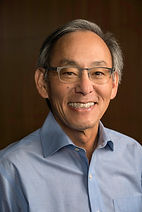
DR. STEVEN CHU
Photo by Steve Fisch
Steven Chu is the William R. Kenan, Jr., Professor of Physics and Molecular & Cellular Physiology at Stanford University. His research spans atomic and polymer physics, biophysics, biology, biomedicine and batteries. He shared the 1997 Nobel Prize in Physics for the laser cooling and trapping of atoms.
From January 2009 until April 2013, Dr. Chu was the 12th U.S. Secretary of Energy and the first scientist to hold a cabinet position since Ben Franklin. During his tenure, he began ARPA-E, the Energy Innovation Hubs, the Clean Energy Ministerial meetings, and was tasked by President Obama to assist BP in stopping the Deepwater Horizon oil leak. Prior to his cabinet post, he was director of the Lawrence Berkeley National Laboratory, Professor of Physics and Molecular and Cell Biology at UC Berkeley, the Theodore and Francis Geballe Professor of Physics and Applied Physics at Stanford University, and head of the Quantum Electronics Research Department at AT&T Bell Laboratories.
Dr. Chu is a member of the National Academy of Sciences, the American Philosophical Society, the American Academy of Arts and Sciences, the Academia Sinica, and is a foreign member of the Royal Society, the Royal Academy of Engineering, the Chinese Academy of Sciences, and the Korean Academy of Sciences and Technology. He has been awarded 26 honorary degrees, published more than 250 scientific papers, and holds 10 patents.
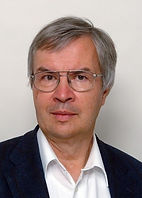
DR. THEODOR W. HAENSCH
Born in 1941 at Heidelberg, Germany, Theodor W. Hänsch received his doctor degree from the University of Heidelberg, Germany, in 1969. In 1970, he came to Stanford University as a postdoctoral fellow, and he was appointed Associate Professor of Physics in 1972. From 1975 to 1986 he held a tenured appointment as a Full Professor at Stanford. In 1986, he returned to Germany to become Director at the Max-Planck-Institut für Quantenoptik in Garching and Professor of Physics at the Ludwig-Maximilians-Universität in Munich. Support by Max-Planck Foundation and the Carl-Friedrich von Siemens Foundation have made it possible to avoid mandatory retirement. Prof. Hänsch has authored and co-authored more than 500 papers, focusing on coherent nonlinear interactions between light and matter. He is widely known for his seminal contributions in the field of laser spectroscopy. His early work includes the first narrowband tunable dye laser, the invention of commonly used techniques of Doppler-free laser spectroscopy, and the first proposal for laser cooling of atomic gases. Since the early 1970's, Hänsch has pursued precision spectroscopy of the simple hydrogen atom, which permits unique confrontations between experiment and fundamental theory. This work has yielded accurate values of the Rydberg constant, the Lamb shift of the hydrogen ground state, and the charge radii of proton and deuteron. Exploring the quantum physics of cold neutral atoms, Hänsch and his coworkers have shown how to integrate a quantum laboratory for ultracold atoms on a microfabricated "atom chip". With a Bose-Einstein condensate in an optical lattice potential, they have been the first to observe a quantum phase transition between a wave-like superfluid state and a particle-like Mott insulator crystal. In 2005, Prof Hänsch shared the Physics Nobel Prize with Roy Glauber and with John L. Hall “for his contributions to the development of laser-based precision spectroscopy, including the optical frequency comb technique".
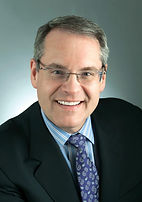
Joseph G. Jurcic, MD, is Professor of Medicine at Columbia University Medical Center and Director of the Hematologic Malignancies Section of the Division of Hematology/Oncology. Previously, he was an Attending Physician on the Leukemia Service at Memorial Sloan-Kettering Cancer Center for over 18 years. His main focus is the treatment of acute and chronic leukemias, myeloproliferative neoplasms, and myelodysplastic syndrome. His research interests include acute myeloid leukemia, radioimmunotherapy with alpha and beta particle-emitting radioisotopes, monoclonal antibody therapy for leukemia, the development of novel small molecule inhibitors for leukemia, and the molecular monitoring of minimal residual disease. He is the recipient of the Louis and Allston Boyer Young Investigator Award for Distinguished Achievement in Biomedical Research. He is the author or coauthor of more than 80 articles and book chapters, has been the principal investigator on over 25 clinical trials, and regularly lectures at national and international meetings. He serves as a Leukemia Section Editor for The Oncologist. Dr. Jurcic received his medical degree from the University of Pennsylvania, completed training in internal medical at Washington University in St. Louis and a fellowship in medical oncology/hematology at Memorial Sloan-Kettering Cancer Center.
DR. JOSEPH G. JURCIC

Dr. Neal Lane is the Senior Fellow in Science and Technology Policy at Rice University’s Baker Institute for Public Policy and holds the titles of Malcolm Gillis University Professor emeritus and Professor of Physics and Astronomy emeritus at Rice University. Prior to returning to Rice University in January 2001, Dr. Lane served in the Bill Clinton Administration as Assistant to the President for Science and Technology and Director of the White House Office of Science and Technology Policy (1998-2001), and before that as Director of the National Science Foundation (1993-98). He was Rice’s Provost and Professor of Physics prior to his time in Washington. He has also served as Chancellor of the University of Colorado at Colorado Springs (1984-86). He received his B.S. (1960), M.S. (1962) and PhD (1964) in physics from the University of Oklahoma.
DR. NEAL F. LANE

DR. RAYMOND L. ORBACH
Dr. Raymond Orbach is the founding director of The University of Texas at Austin’s Energy Institute, a multidisciplinary institute that combines the strengths of the university’s schools and colleges to advance solutions to today’s energy-related challenges. He also has joint appointments as a professor with tenure in the Cockrell School’s Department of Mechanical Engineering; the College of Natural Sciences’ Physics Department; and the Jackson School of Geosciences. From March 14, 2002 until January 20, 2009, Orbach was Director of the Office of Science at the Department of Energy, and was sworn in as the Department of Energy’s first Under Secretary for Science in June 2006. As the Department’s Chief Scientist, he was adviser to Secretary of Energy Samuel W. Bodman for science policy and programs, including basic and applied research ranging from nuclear energy to environmental clean-up of Cold War legacy sites to defense programs. He was responsible for planning, coordinating and overseeing the Energy Department’s research and development programs, its 17 national laboratories and its science and engineering education activities. Orbach was also responsible for the Department’s implementation of the President’s American Competitiveness Initiative, designed to help drive continued economic growth in the U.S. He led the Department’s efforts to transfer technologies from the Department of Energy’s national laboratories to the global marketplace. Orbach began his academic career as a postdoctoral fellow at Oxford University and became an assistant professor of applied physics at Harvard University. He joined the faculty of the University of California, Los Angeles (UCLA) as an associate professor, and became a full professor in 1966. Orbach’s research in theoretical and experimental physics has resulted in the publication of more than 240 scientific articles, and he is a fellow of the American Physical Society and the American Association for the Advancement of Science. From 1982 to 1992, he served as Provost of the College of Letters and Science at UCLA, and from 1992 to 2002 as Chancellor of the University of California, Riverside. Orbach received a Bachelor of Science degree in Physics from the California Institute of Technology and a Ph.D. in Physics from the University of California, Berkeley.

DR. DAVID REITZE
David Reitze currently serves as the Executive Director of the LIGO Laboratory at the California Institute of Technology where he oversees the scientific and engineering staff responsible for building and operating the LIGO Gravitational-wave Observatories in Hanford, WA and Livingston, LA. He is widely recognized for his leadership in the development of ultrasensitive gravitational-wave detectors and gravitational-wave physics and astronomy. Prior to joining Caltech in 2011, he spent almost 20 years as a Professor of Physics at the University of Florida where he carried out research on ultrafast processes in solids and atomic and molecular systems. He received a Ph. D in Physics from the University of Texas at Austin in 1990 and has co-authored more than 350 scientific papers.
Dr. Reitze is a Fellow of the American Physical Society, the Optical Society of America (Optica), and the American Association of the Advancement of Science. He is a member and former Spokesperson of the LIGO Scientific Collaboration that has received numerous awards for the hallmark detection of gravitational waves in 2015.

Eli Yablonovitch is Director of the NSF Center for Energy Efficient Electronics Science (E3S), a multi-University Center headquartered at Berkeley. Yablonovitch introduced the idea that strained semiconductor lasers could have superior performance due to reduced valence band (hole) effective mass. With almost every human interaction with the internet, optical telecommunication occurs by strained semiconductor lasers. In his photovoltaic research, Yablonovitch introduced the 4(n squared) (“Yablonovitch Limit”) light-trapping factor that is in worldwide use, for almost all commercial solar panels. His mantra that "a great solar cell also needs to be a great LED”, is the basis of the world record solar cells: single-junction 29.1% efficiency; dual-junction 31.5%; quadruple-junction 38.8% efficiency; all at 1 sun. He is regarded as a Father of the Photonic BandGap concept, and he coined the term "Photonic Crystal". The geometrical structure of the first experimentally realized Photonic bandgap, is sometimes called “Yablonovite”. His startup company Ethertronics Inc., shipped over 2 billion cellphone antennas. He is a Co-Founder of Luxtera Inc., the world leader in Silicon Photonics, which was recently acquired by Cisco Systems Inc. He has been elected to the NAE, NAS, AmAcA&Sci., NAI, and as Foreign Member, UK Royal Society. Among his honors is the Benjamin Franklin Medal, the IEEE Edison Medal, the Buckley Prize of the American Physical Society, and the Isaac Newton Medal of the UK Institute of Physics, the OSA Ives/Quinn Medal.
DR. ELI YABLONOVITCH
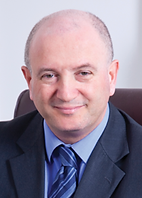
Daniel Zajfman is a Professor of Physics at the Weizmann Institute of Science, Israel. BSc (1983) and a PhD in atomic physics (1989) from the Technion - Israel Institute of Technology. Post-Doctoral fellow at Argonne National Laboratory, near Chicago. Joined the staff of the Weizmann Institute's Department of Particle Physics (now the Department of Particle Physics and Astrophysics) in 1991. Member Max-Planck Society Senate. Member of the American Academy of Arts and Sciences. Past-President of the Weizmann Institute of Science (2006-2019), and since 2020, Chair of the academic board of the Israel Science Foundation. Chair of the Davidson Institute of Science Education and of the Schwartz/Reisman Science Education Centers.
DR. DANIEL ZAJFMAN
STAFF

PRESIDENT
DR. MARK RAIZEN

SECRETARY/TREASURER
DR. STEVEN A. ABRAMS
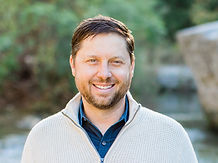
DIRECTOR OF DEVELOPMENT
CRAIG LILL
Craig Lill received a bachelor’s degree in Aviation Technology from Purdue University in 2002 where he made the Dean’s list three times. He also earned an air traffic controller certificate from the Purdue Aviation program. Craig was one of two appointed students on the Purdue Dean of Students Grade Appeals Committee. He was a four-year Purdue University Track & Field varsity team member, making academic All-Big Ten three times over his athletic career. Craig has 20 years of outside sales experience as a Regional Sales Manager and as Sales Director. He excelled at opening new accounts while concurrently maintaining and growing current customer accounts. He managed sales with over ten distributor networks across eight states. Craig has international work and travel experience working with partners in Germany, Czech Republic, Austria, England, and Mexico.
Craig has fundraised for the Boys and Girls Club of America, Austin chapter. He has led as event chairman for Boys and Girls special events, which meant organizing all details of events from start to finish. He also volunteers with the Austin downtown homeless shelter serving meals. Craig is a five-year volunteer board member on the Tarrytown United Methodist church building committee, as well a five-year volunteer board member on the West Austin Neighborhood group. He is a licensed commercial pilot with instrument and multi engine ratings.